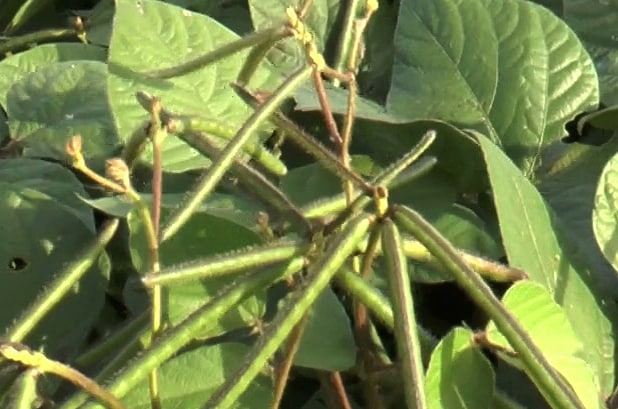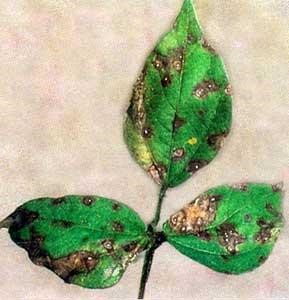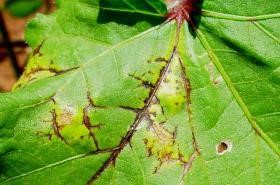


Green gram is a leguminous crop of the species radiata. Green gram is a nutritious source of food with 25% protein content and can also be grown for hay, green manure and cover crop. In the North Eastern Region of India, green gram is grown during Kharif (Aug-oct) and Spring (February-April) under rainfed and irrigated conditions. Short duration and photo insensitive varieties fit well in many intensive cropping systems across the country. The crop needs high temperature, less humidity and moderate rainfall of about 60-80 cm. Water logging is fatal for root development and nitrogen fixation during the early vegetative stage. It is cultivated as a catch crop in summer/spring in between rabi and kharif crops, after the harvest of Rabi crops.


Mung bean is one of the richest plant-based sources of protein and is imbued with essential amino acids including phenylalanine, leucine, isoleucine, valine, lysine and arginine.

| Crop | Area (‘000 ha) | Production (in ton) | Productivity (kg/ha) |
|---|---|---|---|
| Blackgram | 58.956 | 39545 | 671 |
| Arhar | 6.052 | 5244 | 866 |
| Greengram | 13.553 | 10344 | 763 |
| Lentil | 27.312 | 22564 | 826 |
| Peas | 28.441 | 26800 | 942 |
| Gram (chickpea) | 2.568 | 1964 | 763 |
| Other pulses | 16.426 | 14126 | 860 |
| Total pulses | 153.308 | 120587 | 787 |

Green gram is best suited to areas having an annual rainfall of 60 to 75 cm. It requires a hot and warm climate. Green gram is considered to be hardiest among all pulse crops and can tolerate drought to a great extent. Hence, it is successfully grown in any adverse conditions and particularly in drought prone areas during kharif season. However, water logging and cloudy weather are harmful for the crop. It is grown in all the three seasons in the country.

Green gram can be grown on a variety of soils ranging from sandy loam to black cotton soils having good drainage capacity. Saline and alkaline soils are not suitable for green gram cultivation. Green gram is very sensitive to water logging conditions.

| Variety | Year of Release | Duration (days) | Grain Yield (q/ha) | Reaction to Diseases |
|---|---|---|---|---|
| K 851 | - | 60-70 | 10-14 | Susceptible to MYMV and web blight, tolerant to Cercospora leaf spot |
| SG 1 (Pratap) | 1999 | 60-70 | 12-14 | Resistant to Cercospora leaf spot, tolerant to MYMV |
| Variety | Duration (days) | Grain Yield (q/ha) | Disease Reaction | Protein Content (%) | Cooking Quality | Adaptation |
|---|---|---|---|---|---|---|
| AAU SGC16 (Rupehi) | 65-68 | 12.52 | Resistant to CLS, YMV & moderately resistant to WB | 24.50 | Very good | Suitable for both kharif and summer in all zones of Assam except BVZ |
| AAU SGC 20 (Buroi) | 65-68 | 12-13 | Resistant to CLS & YMV | 24.40 | Very good | Suitable for all zones of Assam except BVZ |
| Sonai (SG 21-5) | 60-70 | 12-14 | Resistant to CLS, YMV and MR to WB | 24.70 | - | Kharif season |

20 kg/ha or 2.75 kg/bigha
Row to Row: 30 cm
Plant to Plant: 10 cm
Kharif: Mid-August to mid-September. August is the suitable month for sowing in Central Brahmaputra Valley and Hill Zones. Sowing can be delayed up to the 1st week of September without seed inoculation with PSB (Phosphate Solubilizing Bacteria) and up to the 2nd week of September with seed inoculation with PSB @ 50 g/kg of green gram seed in Central Brahmaputra Valley Zone.
Spring/Summer: Mid-February – Mid-March
Well-drained sandy loam soil is preferable.
The land is to be ploughed 2-3 times followed by leveling. Stubbles should be completely removed. Surface drains should be provided to facilitate quick removal of excess water from the field.
Requisite quantity of lime is to be applied after soil test to bring soil pH around 6.0.
Compost or FYM (Farmyard Manure) @ 1 t/ha (1.33 q/bigha) should be applied.
| Nutrient | Requirement (kg/ha) | Form | Fertilizer Requirement (kg/ha) | Fertilizer Requirement (kg/bigha) |
|---|---|---|---|---|
| N | 15 (Without Rhizobium culture) / 10 (With Rhizobium culture) | Urea | 32 (Without Rhizobium culture) / 22 (With Rhizobium culture) | 4 (Without Rhizobium culture) / 3 (With Rhizobium culture) |
| P2O5 | 35 | SSP | 220 | 30 |
| K2O | 15 | MOP | 25 | 3.5 |
The quantity of N is to be reduced proportionately to the quantity of N added in the form of FYM (each tonne of FYM contributes about 5 kg N). Diammonium phosphate (DAP) @ 75 kg/ha or 10 kg/bigha may be applied in lieu of urea and SSP in non-inoculated crop.
Seeds should be inoculated with Rhizobium culture @ 150 g/3-4 kg seeds. Also, inoculate seeds with PSB @ 50 g/kg seeds along with Rhizobium.
One weeding at 20-25 days after sowing is to be done. Apply pendimethalin @ 1.0 kg/ha as pre-emergence 2-3 days after sowing during spring/summer seasons.
Excess rainwater can be drained out through surface drainage channels 25 cm wide, 15 cm deep, spaced at 6 m distance.


Moderate to high moisture conditions favor the disease,Contaminated seeds,Susceptible varieties,Lack of crop rotation


Harvesting is to be done when 75% of the pods turn dark in colour and splits on pressure. Harvesting should be completed in 2-3 pickings
Jorhat, PIN - 785013 Assam